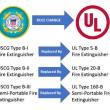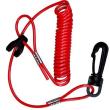Boothbay Harbor: New boating safety regulations
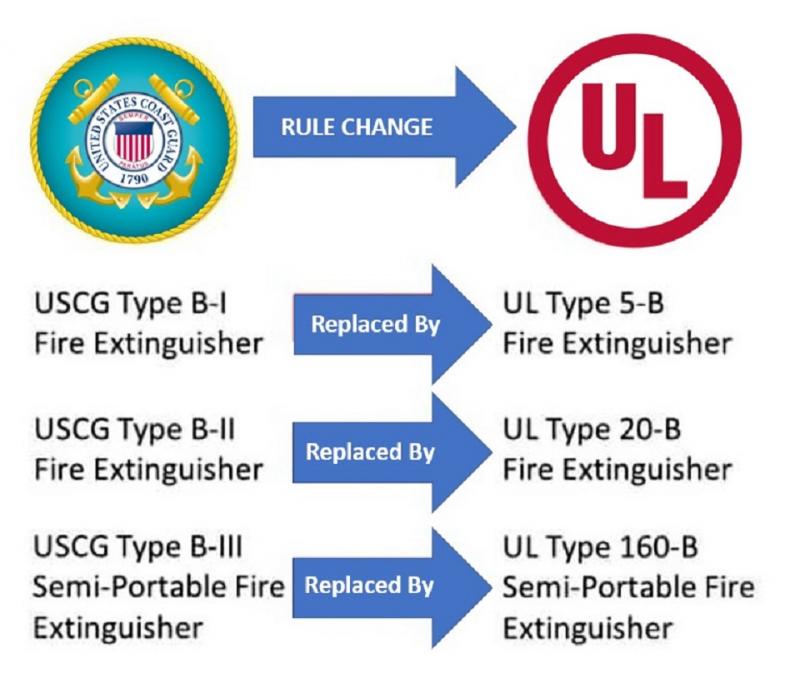 The rules categorizing Marine Fire Extinguishers have changed and newer boats are more affected by the changes. All marine fire extinguishers must be Coast Guard approved; household type models don’t count. U.S. Coast Guard graphic
The rules categorizing Marine Fire Extinguishers have changed and newer boats are more affected by the changes. All marine fire extinguishers must be Coast Guard approved; household type models don’t count. U.S. Coast Guard graphic
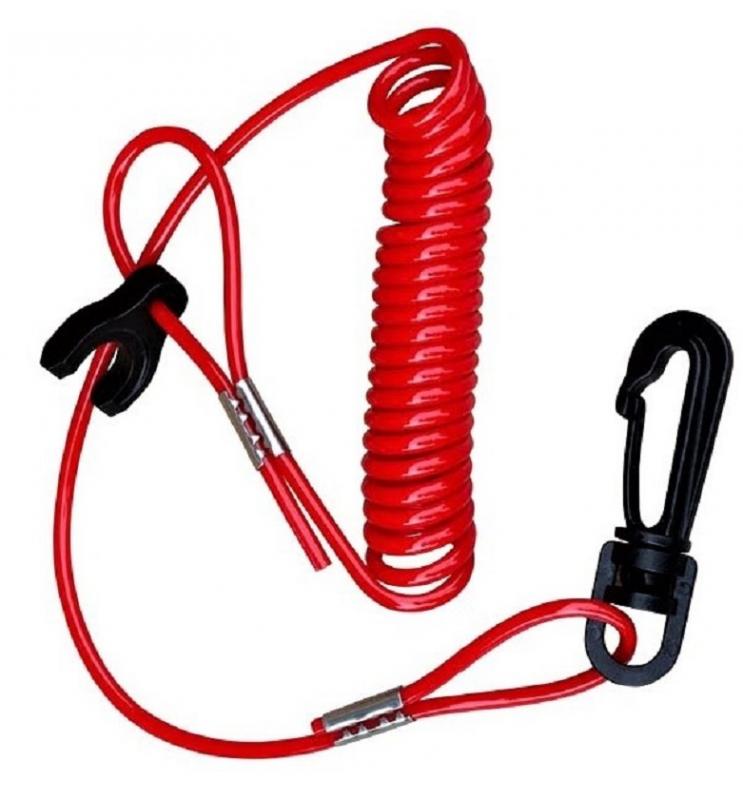 The ECOS, aka Kill Switch, must be in use whenever your boat is operating above displacement speed, so for docking and maneuvering you don’t need to be connected; other times you do. Boaters who’ve had the familiar lanyard and clip stuffed under the instrument panel will now need to dig them out. Courtesy of U.S. Coast Guard
The ECOS, aka Kill Switch, must be in use whenever your boat is operating above displacement speed, so for docking and maneuvering you don’t need to be connected; other times you do. Boaters who’ve had the familiar lanyard and clip stuffed under the instrument panel will now need to dig them out. Courtesy of U.S. Coast Guard
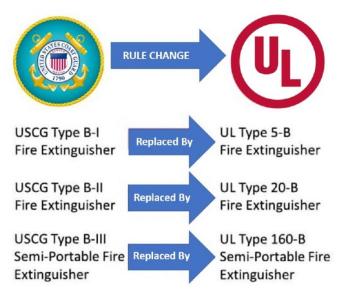 The rules categorizing Marine Fire Extinguishers have changed and newer boats are more affected by the changes. All marine fire extinguishers must be Coast Guard approved; household type models don’t count. U.S. Coast Guard graphic
The rules categorizing Marine Fire Extinguishers have changed and newer boats are more affected by the changes. All marine fire extinguishers must be Coast Guard approved; household type models don’t count. U.S. Coast Guard graphic
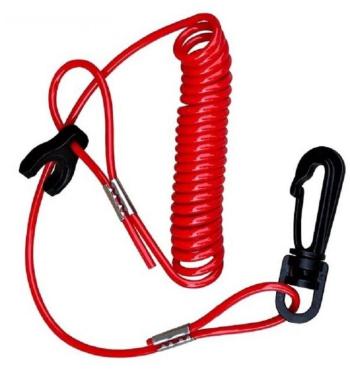 The ECOS, aka Kill Switch, must be in use whenever your boat is operating above displacement speed, so for docking and maneuvering you don’t need to be connected; other times you do. Boaters who’ve had the familiar lanyard and clip stuffed under the instrument panel will now need to dig them out. Courtesy of U.S. Coast Guard
The ECOS, aka Kill Switch, must be in use whenever your boat is operating above displacement speed, so for docking and maneuvering you don’t need to be connected; other times you do. Boaters who’ve had the familiar lanyard and clip stuffed under the instrument panel will now need to dig them out. Courtesy of U.S. Coast Guard
After a long off-season with boats “on the hard,” getting all the items you took off the boat for the winter back aboard and checked out can seem a lot like “work.” When you add that feeling of “how did I ever fit all this stuff on that boat” to concerns about the items that may get you cited by the Coast Guard if they’re missing or broken, you could use some help.
An easy and risk-free way to verify that you’re good-to-go without concerns about getting a citation for discrepant items is to get a free Vessel Safety Check (VSC) by the US Coast Guard Auxiliary. The Auxiliary Vessel Examiners, VE’s, use a form identical to the ones used by Coast Guard boarding teams, so if all the boxes are checked by the Auxiliary VE and you’re displaying a 2022 VSC decal, the worst that may happen is that you get to meet and have a conversation with some very polite and friendly members of the Coast Guard who may be boarding you for the sole purpose of getting training sign-offs for newly arrived team members, or maintaining currency requirements for boat crews and coxswains.
The 2022 season is a bit different in a couple of ways in terms of new or more stringent requirements for recreational boaters. The Covid-19 lockdowns turned into boom years for recreational boating activity and boat purchases with an accompanying rise in boating accidents and fatalities. In response to that rise and as an update to some existing regulations, there are two areas that will affect many small boat owners.
First, operators of boats under 26 feet with installed ECOS (engine cut-off switches) must use those when operating at speeds above displacement speed, that’s times when not maneuvering, docking, etc. Operators of vessels in that size range with the primary controls located inside an enclosed pilothouse, are exempt from the “always connected to the lanyard” requirement. The regulations become fairly complicated when other factors are added to the basic requirements and a CG Auxiliary vessel examiner will be able to explain the specifics of that new rule.
The other area that is similarly murky in many ways is the new classification system for fire extinguishers and the expiration dates now being imposed.
Formerly, designations like “B-1” or “B-2” were references to the sizes of the extinguishers and, as an example, a powerboat of 27 feet would need at least 2 “B-1” or 1 “B-2” extinguisher. Way too easy to figure out.
The new designations refer to the type and size of fire the extinguisher is rated to put out, so a 27-foot powerboat would now need 2 “5-B” extinguishers or 1 “20-B” extinguisher. (1 “10-B” extinguisher Does Not Equal 2 “5-B” extinguishers under the new system.)
It gets more complicated: vessels built after 2018 may carry only extinguishers meeting the new designations while vessels older than 2018 may still carry the older ones designated “B-1” or “B-2” (or larger) extinguishers if they’re in good condition and not more than 12 years old (according to the date stamped on the bottom).
For the full explanation of the new fire extinguisher requirements, go to the Coast Guard link: https://uscgboating.org/recreational-boaters/engine-cut-off-devices.php (or enter search: “New Coast Guard Fire Extinguisher Rules”).
Requirements like lights, life jackets, “throwable” Type 4 flotation devices (life rings or the square cushions), placards required for different sized vessels, bilge ventilation, etc, haven’t changed.



